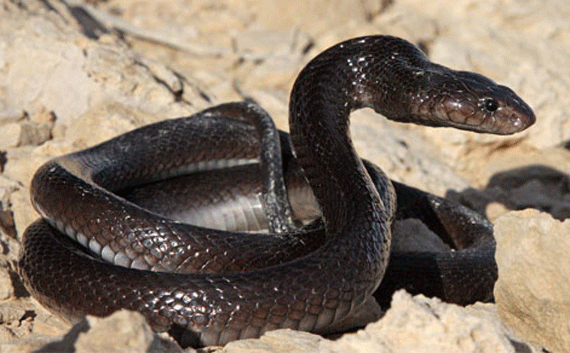|
|
|
 |
|
“THE SPIDER
SKILLFULLY GRASPS WITH ITS HANDS,
AND IT IS IN KINGS' PALACES"
PROVERBS 30:28
|
|

- This may be an
unusual request, but then, maybe not! I am
seeking information about web-spinning spiders in
the Holy Land area during the time Jesus lived
there. I've found information
regarding spiders from many other places, but
there seems to be very little available from your
part of the world. Do you have any knowledge
of this, or possibly know someone else who does?
Margaret Cooper, Chicago, Illinois
|
Shalom
Margaret. This is indeed an unusual request.
In over a quarter of a century of guiding, no one
has ever asked me about spiders. But not to
fear, I just spoke to our Holy Land Spider-Man.
His name is Pini Amitai. Pini is a nickname
for Pinchas or Phinehas, mentioned in the Bible. (Phinehas
was the grandson of Aaron.)
Pini is in his late 70s and doesn't have email, so I
interviewed him by phone. For 33 years he
taught about insects at Hebrew University in
Jerusalem. Today he is a sought-after
volunteer lecturer at the Jerusalem Biblical Zoo
where he stores his collection of snakes, scorpions
and spiders. I once
heard him give a riveting lecture to a class of
Jerusalemite eighth-graders on the mating habits
(i.e. sex life) of yellow scorpions, bull frogs,
tortoises and sea horses. All from personal observation! Pini is also frequently consulted by doctors and
nurses about types of insect and snake bites when
they are treating patients.
Pini told me 2,000 years is not a long time for
spiders. They are very resilient and he thinks
they will even be around 2,000 years from now.
(That is, if our man-produced pollution doesn’t kill
them!) They aren’t extinct like other Holy
Land species, for example crocodiles, which were
hunted and annihilated, because they were being used
for food or leather. Pini is the author of the
best-selling “Children’s Colored Guide to Animals,”
published in Hebrew which includes information on
Holy Land spiders, according to color. He
writes that the following spiders are common in
Israel:
|
• The Flower Crab
Spider is yellow and found on yellow
flowers, but it doesn’t spin a web.
• The Green Spider
has on its underside short, dark hairs, like a
brush, which it uses to weave its sleeping
quarters and the place it lays its eggs.
• The Brown Spider,
which is poisonous, is also found in the U.S.
according to Pini. It has 6 eyes, while
other species of spiders normally have 8.
The brown spider spins a web, but not a large one,
more like a woolen carpet.
• The Lobed Argiope
is silver-colored with black rings on its long
legs. The female weaves a gigantic web which can
reach the size of a bicycle wheel – about 24
inches.
|
|
 |
 |
|
Photo: Pinchas Amitai |
Photo:
Pinchas Amitai |
|
Lobed Argiope |
Black Widow Spider |
| |
• The Black Widow
Spider has been here always.
Often this spider has red spots on its back and
belly. The threads of her web are very
strong and any insect which dares to invade her
“tent,” will be quickly entangled in her sticky
web, which is very often located besides rocks and
bushes. There are 6 different species of
Black Widow spiders in Israel. One of them,
the American Spider Widow, wouldn’t have been here
2,000 years ago. (It may have "hitchhiked"
to Israel with some pilgrims!)
• The Red-Back Spider
is shiny-black with red-crescent shapes
above its head. At birth the spots are
white; then they turn yellow, then orange and
finally red. The Red-Back Spider weaves a
tightly-strung web, very close to the ground to
catch walking or jumping, non-flying insects.
|
|
 |
 |
|
Photo:
Pinchas Amitai |
Photo:
Pinchas Amitai |
|
Red-Back Spider |
Banded Argiope |
| |
• The Banded Argiope
is silver, with lots of stripes. It has four
sets of legs, with the third set the shortest.
It weaves a strong, very large web, up to a foot and
a half in diameter. The Banded Argiope likes
to eat butterflies and is found everywhere,
including the Judean Wilderness near Bethlehem.
|
|
Postscript March 2021 |
|
|
|
During the lockdown due to the coronavirus, Michal
B. found a red-back spider in her garden in central
Tel Aviv. After googling my webpage, she sent
me a photo of the spider which looks exactly like
the photo above. So we can say that
"holy land spiders" are still spinning
their webs! |
|
|
| |
| I have never seen a
spider in Hezekiah's Tunnel in any of the 581 times
I have splashed through. Nevertheless if you
are up for a biblical adventure, here's what you
should bring:
FAQ on Hezekiah's Tunnel. |
| |
| "Let's
not get bitten by poisonous biblical snakes"
describes and illustrates the four species of
venomous snakes still slithering in Israel to the
present day and cites their biblical references. |
| |
|
 |
|
Courtesy of
Wikipedia Commons |
|
The Black Desert Cobra
is mentioned in Isaiah 11 |
|
|
|
|
|
GILA
YUDKIN
•
TCHERNIKOVSKI
64A
•
JERUSALEM
•
ISRAEL
gila@itsgila.com
HOME
•
BOOK
GILA •
TIPS
FOR TOURS •
ABOUT GILA
|
|

